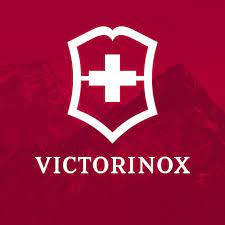What is Tourism in the Medieval Times?
Roman Empire – Rome – Saint James
Fall of the Roman Empire & Medieval Travel
History of Medieval Tourism – How did you travel in the Middle Ages?:The fall of the Roman Empire plunged the European continent into a period of great confusion and disorder. For a time there was also an almost permanent state of war between the barbarian chiefs, who had invaded the ancient Roman empire. This contributed to the weakening of all forms of centralized government power.
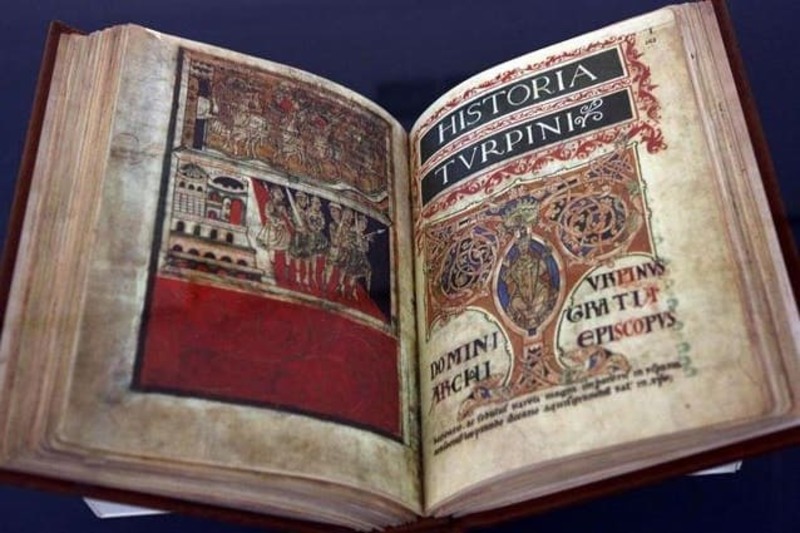
- There was a distribution of the population very different from the previous one.
- Until thefall of the Roman Empire, the Mediterranean Sea concentrated the life of the ancient world.
- The seaway facilitated commerce and travel in general. Tourism also in Roman times
- Early and medieval period of travel, traveling in the middle ages.

Tourism in the Medieval Period, however:
- Breaking of the communication between east and west
- Civilization extended to northern Europe and the British Islands
The transition from ancient to medieval culture during the High Middle Ages, took place gradually and almost imperceptibly. Roman economy, social organization and art inevitably declined. One of its consequences was the transfer of the population to rural areas. Prevalence of agriculture and large properties: that was the main characteristic during the high middle ages. Only land ownership conferred wealth and power..
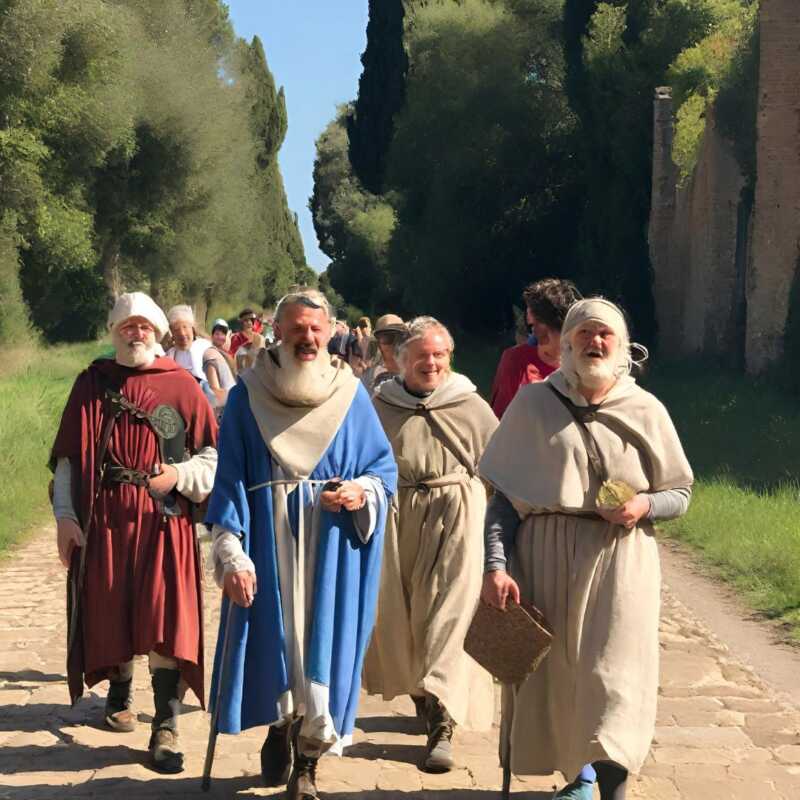
Goodbye to RomanTourism – Hello Tourism in the Medieval Times
The practice of tourism was abandoned. Most hedonistic customs too. There were transfers to hot springs that continued to explode. These were installed in abbeys or monasteries managed by religious orders that kept the facilities in good conditions of use. One of the characteristics of the High Middle Ages was the sedentary nature of the population.
- Feudal lords who locked themselves in their castles and only departed to neighboring fiefs on brief war excursions or pillage.
- Servants, for whom all kinds of trips were impossible.
- The Middle Aged man never left his place of residence. Vasallaj’s system, closed economies and even internal customs acted as a brake on displacement and trade.
There was no tourism in the Middle Ages as in Roman times. But, the Church had a transcendent role in all aspects of daily life. His action transcended the spiritual to also cover the social, the cultural and even public affairs. The Greek ideal of leisure moved to the monasteries, for for many the essence of the early Christian religion was to live to get closer to God. It Was considered sin the accumulation of wealth or the same work to obtain them.
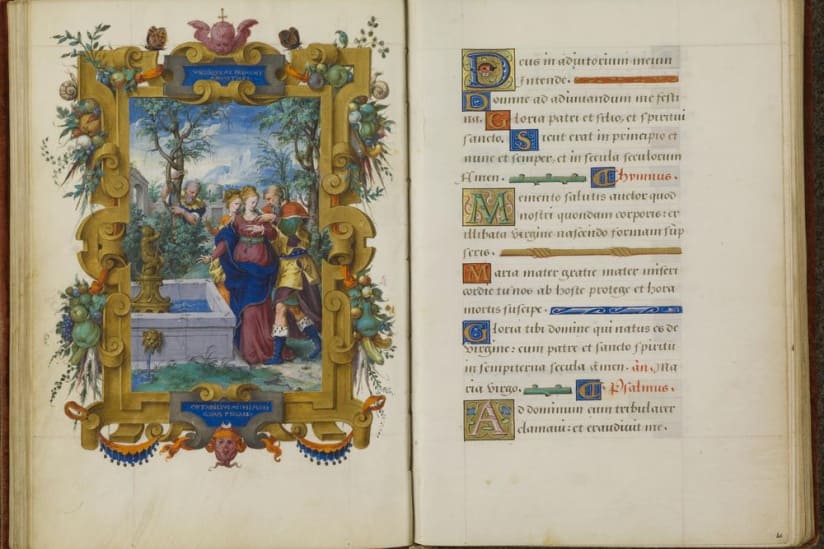
What was Leisure & Tourism in Medieval Time like?
Medieval Travel: When the political and social situation consolidated, a powerful social group formed by Lords appeared. This was a higher level of society, which adopted an attitude of exhibitionist leisure. As in the middle ages there was no printing press, most people did not receive education. The few who had the opportunity and the desire to learn had to travel to have new knowledge. 
Traveling in the Middle age. Leisure of the Lords
History of Tourism in Medieval Times: The leisure exhibition showed his release from the need to work. The leisure of the Lords was the expression of their opposition to servile work, and by putting it in evidence as many times as possible they reaffirmed their membership in the aristocratic class.
Popular leisure
Popular leisure, meanwhile, while present, was not free. It was the activity of the days of rest and celebration. Usually religious and related to the patron saint of the place or the great religious festivities. The leisure of the lower classes was organized and controlled by power, that is, the Lord and the Church.
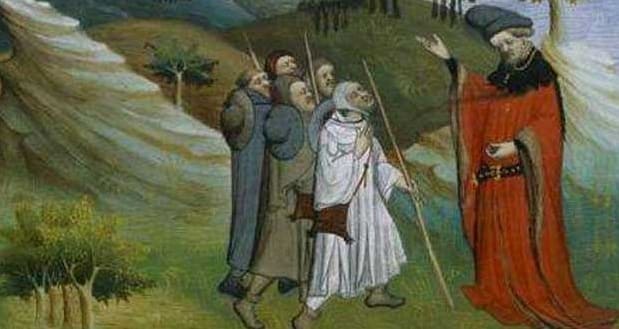
Pilgrimage in Medieval Times , Via Francigena
The Religious Tourism in Midlle Ages
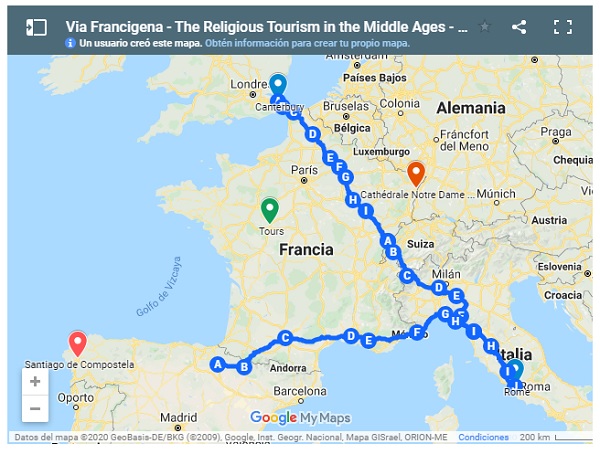
Castle of the Magione on the Via Francigena
It is an old church and a pilgrim hospital on the Via Francigena, originally belonging to the Knights Templar. It served as accommodation and protection for the pilgrims. The Castle of the Magione (Castello della Magione) located in Poggibonsi, Siena, Italy, is a monumental complex from the Middle Ages belonged to the Knights Templar. It has also been preserved to this day. The castle is also known by the name of magione di San Giovanni al Ponte, or spedale di san Giovanni in Jerusalem alla Magione. The Castle is located on the right bank of the Staggia river, opposite the old Bonizio bridge, about 3 kilometers from the city center of Poggibonsi. This set of buildings is from the early 12th century and originally belonged to the Knights Templar. When the order was suppressed in 1312, it passed to the Hospitaller Knights, until 1752.
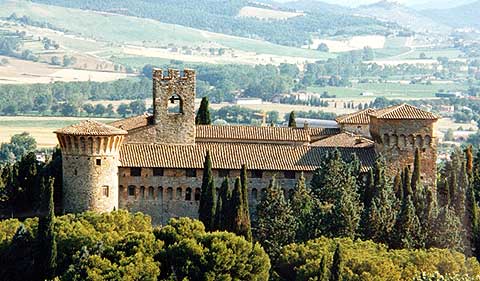
Castello della Magione in the 19th century
At the end of the 18th century the hospital was given in usufruct to the Order of Malta. With the suppression of the Order of Malta (1799) the property remained in the hands of the Corsini family. In 1866 the Corsini family sold the church and other buildings, keeping the usufruct. The church was closed in 1822. In 1979 the complex was bought by Count Marcello Alberto Cristofani, who gave as patrimony and as Headquarters of the Magisterium, the Temple Militia – Order of the Poor Knights of Christ, which he founded. So you have to bring the restoration project, which brought the complex back to its original state.
What was the Pilgrimage to Rome like in Medieval Times?
One of the main medieval pilgrimage routes led to Rome. The ultimate goal of the pilgrims was to reach the basilica of St. Peter and visit the graves of St. Peter and St. Paul. Rome had numerous churches with more relics of saints and martyrs of antiquity. The pilgrims visited almost all of them. The main access route to Rome was the Via Francigena that started from Canterbury and crossed from northwest to southeast France and Switzerland, to penetrate Italy through the Alps. Part of this journey was made on Ancient Roman Roads still existing. Travel in the Middle Ages.
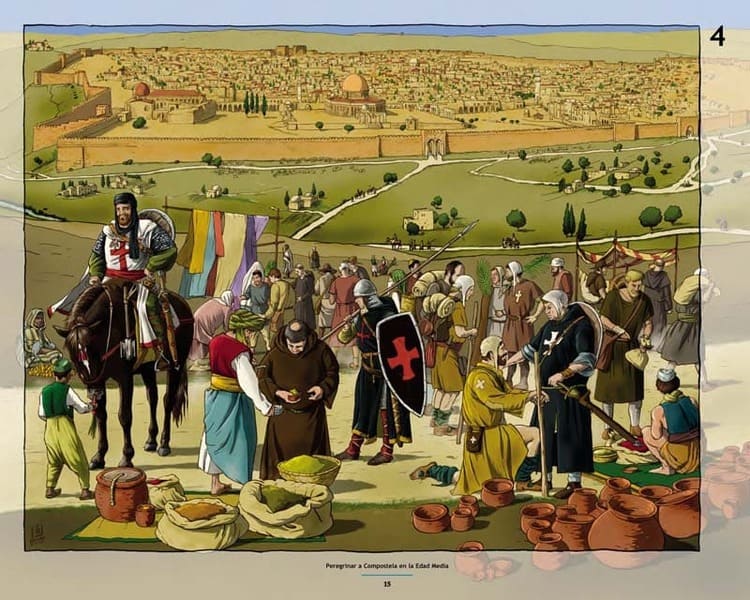
This route starts from the visit of the Archbishop of Canterbury, Sigerico el Serio at the end of the 10th century. Many pilgrims read their writings with the description of the stages of this trip. 
The pilgrimage to Rome will decline at the time of the crusades and It will be partly displaced by the pilgrimage to Compostela – Galicia – Spain. Santiago de Compostela shows himself as a saint very close to the faithful who visit him because of the many miracles he performs in his tomb in Galicia.
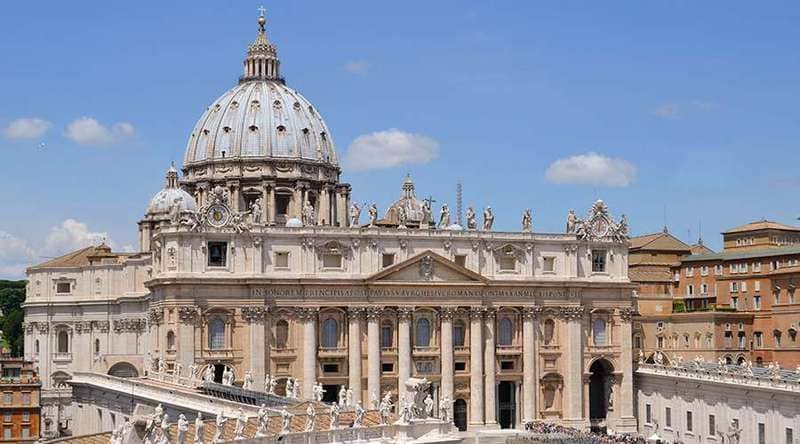
Only from the year 1300, with the institution of the jubilee for part of Boniface VIII, Rome will once again attract the attention of Pilgrims In the following centuries it will be the main destination and focus of attention of the faithful pilgrims, religious tourism and Medieval Travel.
Medieval Travel Way of St. James: Pilgrimage to Compostela (Spain)
The road to Santiago ( Way of St. James) is to this day a tourist circuit, one of the oldest and busiest in the world, maintains its essence and the feelings of those who come from all over the world to make a pilgrimage. Compostela, in chronological order is the last of the great pilgrimage centers to emerge, from the ninth century. And it will become one of the most important pilgrimage centers of medieval Christianity, she was going to venerate the tomb (supposed) of the apostle Santiago.
The pilgrimage to Compostela will be motivated not because James came and preached to Spain, but because of the spread, throughout Christianity, of the news of the discovery of the apostle’s grave. It turns out that the West, if we except Rome, does not have any other apostolic tomb. It also adds what every sacred place needed to become popular.
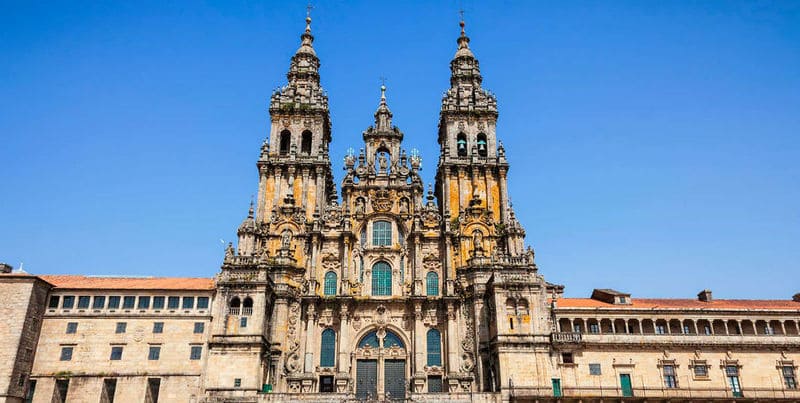
History of Tourism in Middle Ages: The Holy Healer
The fame that the apostle Santiago acquires as a holy healer explodes religious tourism in the middle ages. Pilgrims are set in motion by stories about the priests of the Saint. Compostela Cathedral in Spain is a new destination in its own right. And compete with Rome.
The Codex Calixtinus, a work of the twelfth century, indicates four routes that cross France, become a single way on Spanish soil, to reach Compostela.This place is called Puente la Reina. This route is integrated to other different pilgrimage routes in the road that leads to Compostela and whose destination is Rome, Tours or Jerusalem.
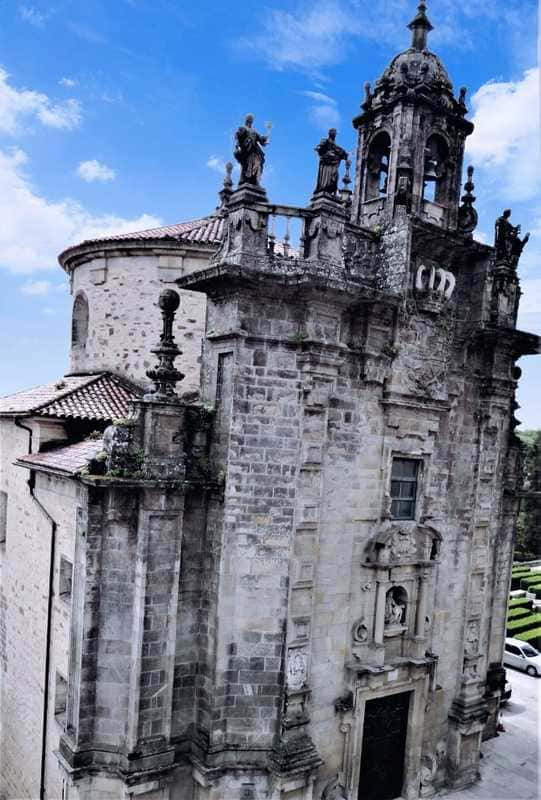
Santiago de Compostela becomes the most famous sanctuaries in the west whose goal is to visit the tomb of the Apostol. This Saint surpasses all other saints for his healing properties, because Santiago, like several centuries before San Martin de Tours, heals everything. It even surpasses it in the number of diseases it cures because Santiago is the one who returns the sight to the blind, the ear to the deaf, the voice to the mute, life to the dead. It also heals people of all diseases for the glory and praise of Christ.
How was the Pilgrimage to Tours – France in the Middle Ages?
In the early years of the Middle Ages the tomb of St. Martin in the Cathedral of Tours ( France) was within religious pilgrimage and tourism. Especially since the sixth century. He is a saint admired by the Frankish kings of the Merovingian dynasty, which makes him the center of the pilgrimage of the Frankish world. For the people of the early medieval times no other Saint had a power similar to Saint Martin. Is the friend of God and as collected by Codex Calixtinus, in the twelfth century, he has a reputation as a resuscitator, as a curator of leprosy, of the energum, lunatics and the demonized.
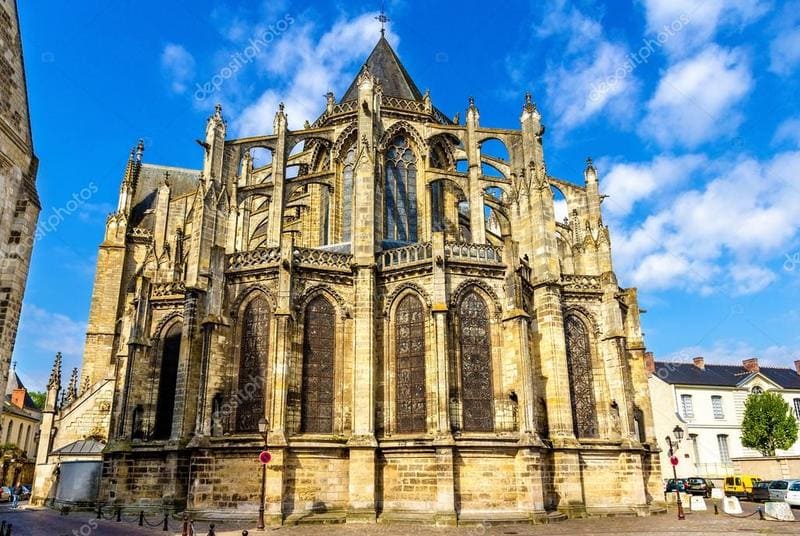
In the city of Tours, the people set out to seek the cure of all kinds of diseases. In fact, in the devotion of the faithful, Saint Martin goes through being a holy healer, specialized in curing diseases such as blindness, paralysis, deafness, fever, plague and muteness. It also causes the lame to walk rights, and by ridding the possessed by the devil, the snake venom is overcome and the elements of nature obey him. Around Tours the pilgrimage begins to make sense penitential. He goes to the tomb of St. Martin to fulfill a penance through which to obtain forgiveness of sins. 
How was the Pilgrimage to Meca?
One of the pillars of Islam is the visit to this center of worship. He established himself with the writing of the Quran at the death of Muhammad (632). Any Muslim with sufficient physical and economic conditions must go on a pilgrimage to Mecca at least once in his life. The rituals to follow vary depending on where the individual comes from, the time of the year, the variant of Islam professed by the pilgrim, or the intentionality of the pilgrimage
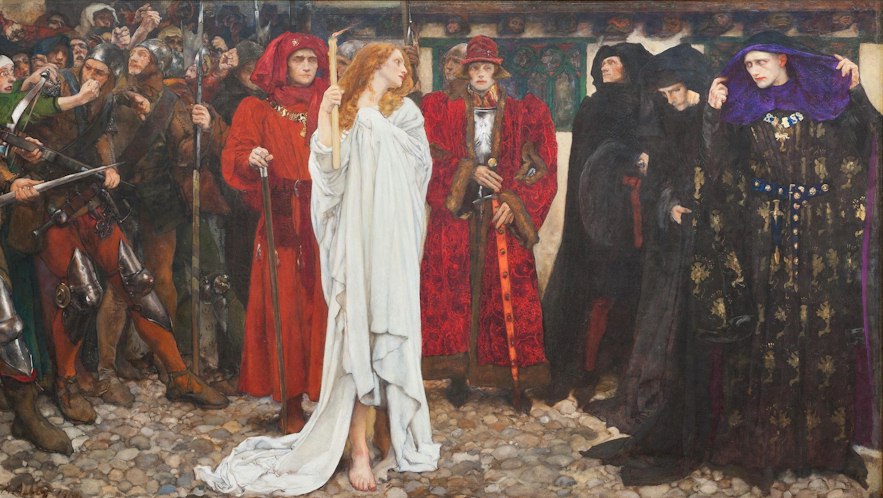
What were the kinds of tourist pilgrimage in the middle ages?
Devotional Pilgrimage
This was the beginning. Devotional or curiosity: to know and venerate the holy places, the tombs of the martyrs. Without particular interest to travel, pray and know.
Utility Pilgrimage
It is about seeking the cure of any kind of illness or evil. The christian Europe of the High Middle Ages will be marked by the places, sanctuaries or cathedrals where the intervention of the holy healers was to be sought. all to get rid of some physical or spiritual evil
Penitential Pilgrimage
From the eleventh century, the pilgrimage also acquires a penitential sense. It is carried out by imposition to purge public or private sins, more or less scandalous, committed by the laity or clergy. This is a type of public penance
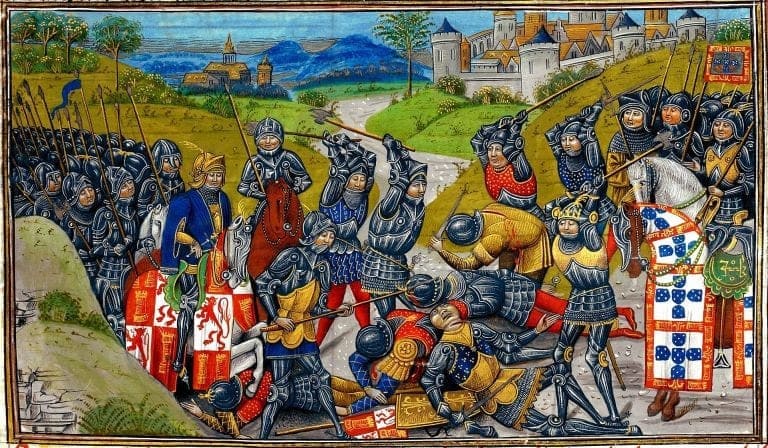
Judicial Pilgrimage
To exchange a penalty the civil or religious authority imposed this method. Among other sins that were punishable by judicial pilgrimage, there were the murder and theft of ecclesiastical goods. In the last medieval centuries, XIII-XIV centuries, the Church, due to the excesses of many penitents, begins to restrict its use. What were the excesses? in the next section we clarify
Proxy Pilgrimage
It is due to the influence of Germanic civil law in the penitential system. By paying money to a substitute person a penalty could be redeemed. It was called devotional or penitential redemption.
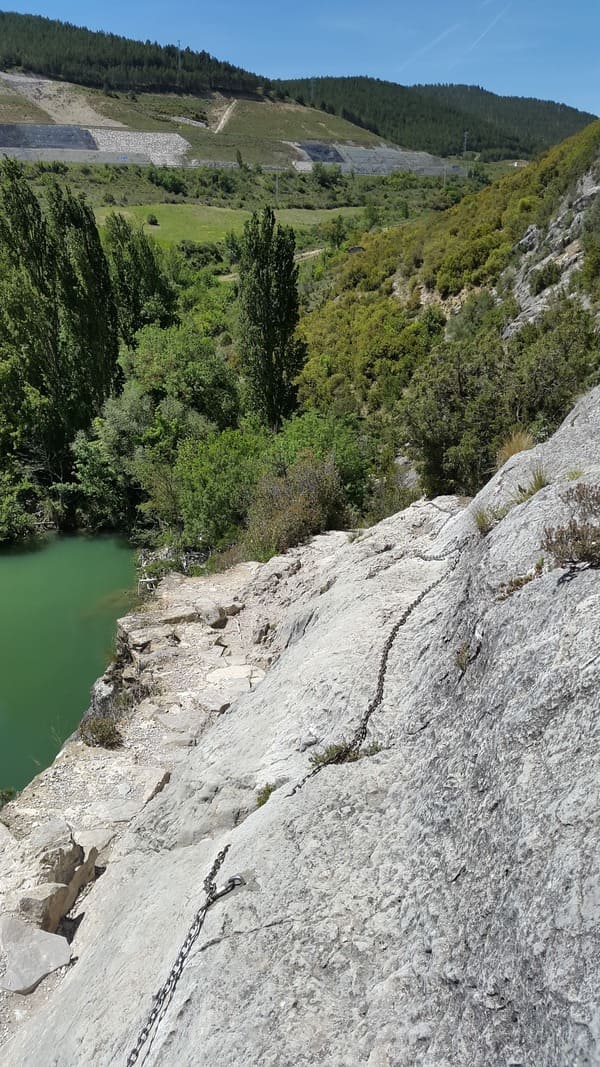
This practice was used by the rich and noble who through money bought the spiritual merits inherent in the pilgrimage without having to suffer the inconveniences of the road. This way you could pay the price of a murder or a robbery, with no consequences other than money
How did you travel during the Middle Ages?
By Land
Land travel followed the old network of Roman roads (at this time very deteriorated), which began to be rehabilitated towards the 12th century and locally. Road maps were seldom used, which began to be disseminated recently in the 14th century. Oral information was the most used and used to be the most valid and up-to-date. It was common to travel in groups and with a lot of cargo: merchandise, food, feed, weapons, tools, shops, clothes, money, documents, etc. The pilgrims traveled lighter in luggage. Traveling was expensive: porters, adequate clothing, tolls, tips, accommodation, meals, doctors, etc.
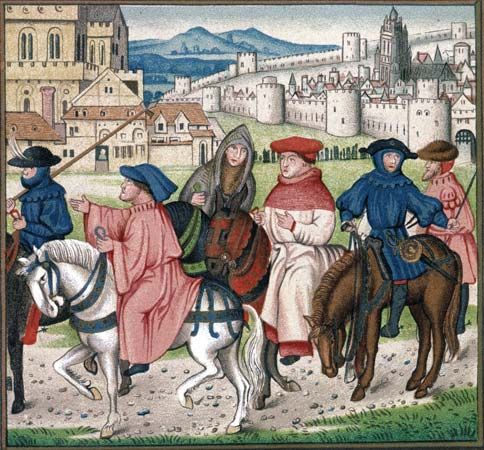
Wine and beer were the most recommended drinks to consume during a trip. The water was not drinkable, especially in the cities. Vehicles were hardly used, since cars were useful for traveling short distances. In long distances due to the state of the roads they were not practical. And there was no post system or places for arrangements Saddle animals were widely used: horse, mule or donkey. It avoided the fatigue of walking, allowed loading and was well adapted to rustic roads. He never galloped, not even trotted.

Tourism in Medieval Times by Sea
For long journeys between coastal cities, the sea route was preferred to the land route as it was faster and more comfortable (for example between Marseille and Venice). In the Mediterranean, coastal navigation was widely practiced, that is, without losing sight of the mainland. This allowed them to take refuge in the ports in case of bad weather. They used to sail especially in summer (preferably in June and July) when the sea is calmer. The most common methods of keeping the course were, during the day, the position of the sun and the release of embarked birds and, at night, the stars.
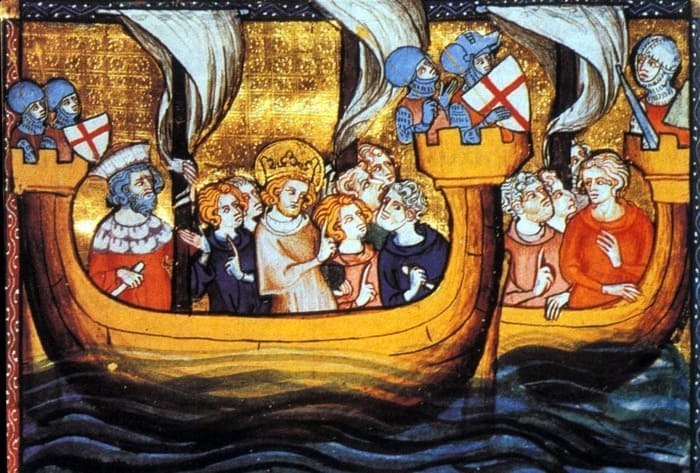
In the late Middle Ages, various scientific advances were disseminated among European navigators that facilitated navigation at height and with few scales. Most of them were introduced by Islamic sailors: the Latin triangular sail (12th century), the compass (around 1200), the stern rudder (13th century) and the first maritime charts (13th century). The astrolabe and the quadrant did not become widespread until the 15th century. Genoese and Venetian merchants traded with the Far East, but did not do so directly, but through intermediaries in Asia Minor who bridged the ships and caravans of the Silk Road. In the late Middle Ages, the only regular passenger service in the entire Mediterranean was the galley that annually made the journey from Venice to the Holy Land loaded with pilgrims.
Across The Rivers
Some of the continental routes that we do today by road could be made by river (for example along the Rhone, the Ebro, and the Rhine). River navigation required the payment of tolls and was used above all for goods. River navigation complemented very well, both with maritime navigation and with land routes. Pets Accessories on Amazon
Travel, tourism and war in middle ages
From the end of the 11th century, Europe was the scene of the first crusade. Preached by Urban II in the French city of Clermont-Ferrand in the year 1095, the first crusade was a response to the spread of Islam. Nobles from the main European courts, such as France or England, participated in the campaigns carried out within this framework of the Holy War until 1291, some motivated by a matter of faith and others, rather, to obtain prestige or the favor of Rome.
In 1119-1120 the Temple emerged as a religious and military corporation. Originally, the Order of the Poor Knights of Christ had as its objective the defense of the Christian faith, but it stood out for becoming the first macro-state in Europe.
One of the most traveling groups of the Middle Ages was the Templars. Precisely, the need to carry out good management of the funds from the Old Continent in the Holy Land to finance the crusades prompted these monks to develop a complex banking system, in which the monarchs and feudal lords of the time trusted. Added to the particular Templar charisma were the fiscal advantages received as a privilege, since the exemption from paying taxes and tithes anywhere in the world, decreed by Pope Innocent II in 1139, generated great revenues.
What was the Protection of pilgrims like in the Middle Ages?
In the year 1150 they created a system to protect pilgrims from highway looters, in such a way that, before embarking on the journey, Christians deposited their valuable objects in boxes that the Templars would guard until their return, receiving in exchange a note with an encrypted code. The pilgrims requested the money they needed at the local Templar commandery, where a new code was marked on the same note.
At a war and commercial level, the speed of the Templar horses made it possible to overcome distances. . Strategically positioned, the brothers were able to trade with the East and have their own fleet of ships to transport troops and merchandise to the Holy Land. It still remains an enigma where a dozen ships that set sail from the port of La Rochelle (France) in 1307, pursued by Philip IV the Fair, went. Did the Templars arrive in America before Columbus?
On the other hand, at the end of the Middle Ages, exile was one of the most severe penalties, such as the edict of conversion or expulsion of Hispanic Jews (1492), during the time of the Catholic Monarchs. The Sephardim took Spanish and their attachment to the land in which they were born to the new forced homes in which they had to settle in Italy, the Balkans, North Africa, the Middle East, northern European countries, etc.
Tourism and the plague in the Middle Ages
The plague entered Europe on Italian ships from Crimea and Constantinople. The northern shore of the Black Sea was occupied by tribes of Mongols (Tatars) and, in 1340, the Tatars, allies of the Venetians, clashed with the Genoese, who were forced to take refuge in the city of Caffa.
Since 1347 the epidemic spread unstoppably through commercial circuits. Although in some ports, such as Messina (Sicily), ships were prevented from entering, the rats abandoned the ships and spread the disease, which reached Marseille in November.
This infection is generally caused by the bite of an infected flea, which lives on rodents. Apart from the flea, the plague is transmitted by inhalation of Flügge droplets. The term comes from the German hygienist Carl Flügge (1847-1923), who confirmed that even when speaking quietly, tiny droplets are nebulized into the air.
Other travelers
In his Wanderings and Travels, the Andalusian Pedro Tafur narrates a journey made between 1436 and 1439 through much of Europe and other places in the Mediterranean, such as Crete, Rhodes, Cyprus, Chios, Egypt and the Middle East. He also passed through Rome and Constantinople, shortly before their fall to Islamic hands. Tafur explained how difficult it was to access Constantinople through the Black Sea in 1437 due to commercial blockades due to rivalry between the powers; Later, mandatory quarantines would be imposed on transits.
History of Tourism in Middle Ages: Conclusions
Trade begins to grow causing people to move from one place to another for commercial and religious purposes. Also the conquests, the improvements of the roads (Roman roads were still used) and the trails facilitated tourism for those scholars and pilgrims who went from one place to another. While tourism in the middle ages was not very important, it is for current tourism. Many constructions; Cathedrals, Churches, Castles are today great tourist attractions. The Middle Ages has left us a unique historical and architectural legacy, worth preserving for future generations. All the information on tourism and travel during the Middle Ages can be found in Amazon e-books. Available in eReader format or also in Digital Paper. Also in consultation in public libraries with digitized formats

Tourism in the Middle Ages (5th to 15th Centuries)
While often depicted as a time of darkness and stagnation, the Middle Ages actually saw a significant amount of travel and exploration, laying the groundwork for modern tourism. Here’s a brief overview:
Main motivations for travel:
- Religious pilgrimages: This was the most prominent form of travel during this period. People journeyed to holy sites, such as Rome, Jerusalem, and Santiago de Compostela, to seek spiritual fulfillment and blessings.
- Trade and commerce: Merchants traveled extensively to buy and sell goods, contributing to the growth of towns and cities along major trade routes.
- Military campaigns: Crusaders embarked on long journeys to fight in the Holy Land, while knights participated in tournaments and wars across Europe.
- Education and scholarship: Students traveled to universities and centers of learning to study subjects like law, medicine, and theology.
- Medical tourism: People seeking specific treatments traveled to renowned specialists or holy sites believed to have healing properties.
- Grand tours: Wealthy young nobles embarked on extended journeys across Europe to expand their knowledge and experience different cultures.
Challenges and limitations:
- Poor infrastructure: Roads were often in disrepair, making travel slow and dangerous.
- Limited resources: Most people lacked the means to travel long distances, restricting tourism to the wealthy and privileged.
- Political instability: Wars and conflicts made travel unpredictable and hazardous.
- Social stigma: Travel was sometimes viewed with suspicion, especially for women and unmarried individuals.
Notable destinations:
- Rome: The center of the Catholic Church and a major pilgrimage destination.
- Jerusalem: Holy city for Christians, Jews, and Muslims, attracting pilgrims from all over the world.
- Santiago de Compostela: Site of the supposed tomb of the apostle Saint James, drawing pilgrims from across Europe.
- Mecca: The holiest city in Islam, attracting Muslim pilgrims for Hajj.
- Constantinople: Capital of the Byzantine Empire and a major center of trade and culture.
- Venice: A wealthy trading city known for its canals and maritime power.
Evolution of tourism:
- Growth of pilgrimage routes: Improved infrastructure and increased safety led to the development of established pilgrimage routes, such as the Camino de Santiago.
- Emergence of inns and hostels: To accommodate travelers, inns and hostels began to appear along popular routes, offering food, lodging, and basic amenities.
- Rise of the Grand Tour: This practice, popular among wealthy young men, became a symbol of cultural refinement and education.
- Development of travel guides: Books and maps were written to guide travelers and provide information on destinations, routes, and local customs.
References – Religious Tourism in the Middle Ages
- The Vatican : spirit and art of Christian Rome The MET
- Codex Calistinus ( amazon.com)
- The City od God – Saint Augustine
- The Confessions: The Works of Saint Augustine
Related Post – Tourism in Medieval Times:
- Tourism in Ancient times- Rome & Greece
- Luxury Luggage +
- More Travel Gadgets
- Crane in Ancient rome
- Medieval Treadwheel Crane
- What can you bring on a planes 2022?
- Strasbourg Treadwheel Crane
- Travel Check History
- Amazon Products Search






